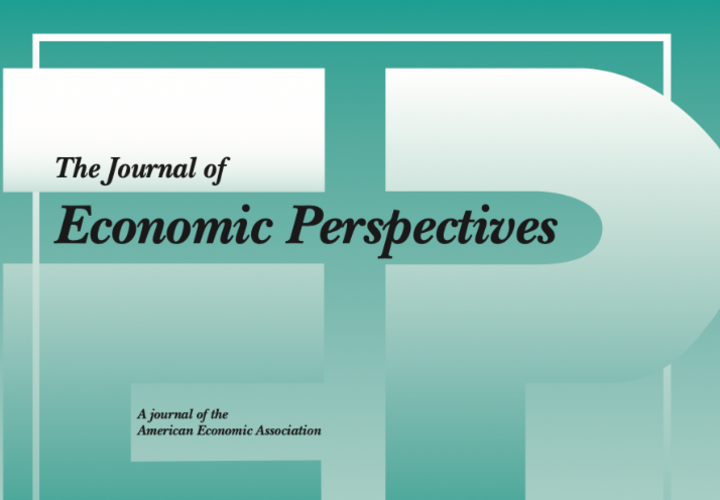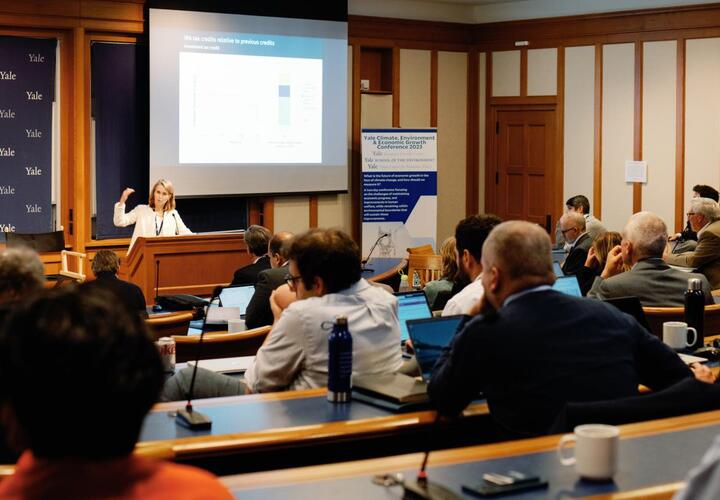Can economies grow & advance human welfare, yet stay within the environmental bounds to sustain those improvements?
The Climate, Energy & Growth Initiative combines complementary research methods to give insights on advancing sustainable & equitable growth in lower-income countries.
The consequences of climate change disproportionately affect communities in low- and middle-income countries. At the same time, many countries are newly industrializing, increasing energy demand. Understanding how to effectively and sustainably meet rising energy demands, control emissions, and mitigate climate risk is critical for enabling climate change adaptation and resilience while continuing to spur economic development.
EGC’s Climate, Energy, and Economic Growth Initiative brings together research from environmental and energy economics, economic development, and industrial organization to address the urgent environmental and energy challenges facing the world today. Our research supports effective policymaking, environmental regulation, and evidence-based institutional decision-making by working closely with policy partners on the ground. The initiative aims to research 4 central topics within climate, environment, and energy supply in developing countries:
Energy consumption and groundwater supply
Distortionary subsidy schemes, such as free electricity in agriculture, encourage the overuse of valuable resources like groundwater. Especially in climate-stressed areas, this may have detrimental effects on groundwater supply and, in turn, people’s capacity to adapt to climate change. EGC affiliates have been studying models to remedy the impacts of distortionary subsidies, for example by offering rebates to farmers in India for reducing electricity consumption from water pumps.
Read more
EGC affiliate Nicholas Ryan (Yale University) and Anant Sudarshan (University of Warwick) are studying how policy geared towards the use of communal resources like groundwater can balance economic growth with environmental protection. In Punjab and Andhra Pradesh, India, researchers work with the state electricity distribution company to offer farmers rebates for energy saved in groundwater pumping.
This model addresses distortionary subsidies and reduces both energy usage and groundwater depletion. In a previous study in Rajasthan, Ryan and Sudarshan find evidence that simply rationing the amount of energy available for groundwater pumping per day leads to inefficient water allocation across farms and thus limits agricultural productivity overall.

Groundwater depletion in India: The figure shows the rate of groundwater exploitation by district, as classified by the Central Groundwater Board, Government of India.
Adaptation to climate risk
How do disaster-affected communities adapt to climate risk over time? Can forecasts and targeted information about future disasters help households take precautionary measures? Understanding how to facilitate effective adaptation can increase communities’ resilience, and protect livelihoods and infrastructure in disaster-affected regions. EGC researchers are, for example studying the impacts of an early warning flood forecasting system in Bihar, India, and how providing flood alerts changes households’ decision-making along dimensions such as preventive health and agriculture. Climate adaptation may also include migration. For instance, EGC affiliates study how migration addresses seasonal poverty.
Read more
Last-mile service delivery can pose an obstacle to effective climate change adaptation. EGC Director Rohini Pande (Yale University) and Maulik Jagnani (Tufts University) are working on the first experimental evaluation of an early warning flood forecasting system in Bihar, one of India’s most flood-prone states. In collaboration with Google and a local NGO, researchers are disseminating highly accurate and reliable flood alerts to villages. With the help of recruited volunteers, these messages are being shared via WhatsApp, but also via non-digital means like loudspeakers. While all villages have access to Google’s flood alerts, community-based outreach is available to randomly selected 160 communities, reaching over 1.8 million people. Early results suggest positive impacts of the alerting system on communities: Communities in which volunteers amplified alerts were more likely to receive the warning, were better informed and prepared, and experienced improved health outcomes. Ongoing research further suggests that limited market access may hinder adaptation. Research by Islamul Haque (Yale University) in coastal Bangladesh suggests that high transportation costs to ports discourage farmers’ reallocation of their land to salinity-resistant aquaculture, more suitable to rising sea levels in the area.
Energy markets, tariffs, and off-grid solutions
Newly industrializing regions require an increasing amount of energy to sustain their growth and economic development. Renewable energy sources present a significant opportunity, both in the total amount of energy available and in limiting the negative environmental impacts of energy generation. With the rise of renewable energy sources, prices for solar and wind energy, as well as hydropower, are subject to large fluctuations that require dynamic approaches to pricing. Within the broader topic of energy markets, EGC researchers study the optimal design and tariff structures for renewable energy sources, policies governing retail energy pricing, expanding the electricity grid to rural areas, and working with utilities to improve revenue collection. EGC researchers have also worked on measuring household preferences between grid connections and off-grid energy sources.
Read more
Using historical data from India’s energy trade, EGC affiliate Nicholas Ryan (Yale University) shows that congestion on the power grid exacerbates market power – meaning sellers can raise prices with little risk of being undersold – in the Indian electricity market. The study explores how infrastructure investments can increase competition on the grid. Findings have relevance for market design as India adopts further reforms to supply a growing population of consumers on the grid and increase energy access in rural areas. Particularly in areas with low electrification, falling off-grid solar prices and subsidized grid extension are revolutionizing choice for the millions of people without electricity. Robin Burgess (London School of Economics and Political Science), Michael Greenstone (University of Chicago) Nicholas Ryan, and Anant Sudarshan (University of Warwick) use experimental price variation to estimate the demand for different sources of energy in Bihar, India. Findings suggest that households prefer subsidized grid access over off-grid solutions, especially as households grow wealthier. Understanding electrification preferences may be critical in shaping energy policy and the strategies of energy distribution companies.
Environmental regulation and market-based pollution control
Pollution is not only detrimental to environmental health but it has also been shown to decrease life expectancy and lower productivity. Policymakers have several tools for reducing harmful pollution from industry, such as command-and-control regimes in which strict limits are set on a firm’s total emissions, or market-based mechanisms in which firms trade emission permits below a certain cap. Each regulatory approach comes with unique benefits and drawbacks, and it is not always clear what the appropriate tool is for a given context. EGC affiliates work on testing regulatory mechanisms at scale, such as scaling a market-based scheme for air pollutants in India.
Read more
EGC Director Rohini Pande (Yale University), EGC affiliate Nicholas Ryan (Yale University), and co-researchers Michael Greenstone (University of Chicago) and Anant Sudarshan (University of Warwick) are evaluating the impact of the first emissions trading scheme for particulate matter on air quality, industry compliance costs, and industry profits in India. In partnership with state pollution control boards, researchers set up an emissions trading platform and permits were issued to industrial plants. For the emissions trading scheme to work, the project introduced continuous emission monitoring systems through which particulate matter emissions from all participating plants were closely observed. The program has been scaled up in Surat and Ahmedabad, reaching nearly 11 million people living in their airsheds. Further expansions are being planned in Vadodara, Vapi, Bharuch, and Ankleshwar in Gujarat and a sulfur dioxide market is being planned in Maharashtra. Results from the Surat market demonstrate positive impacts: Industries trading in the market cut emissions by 20-30% without any increase in their regulatory costs.
The figure below shows an industrial district of Surat, India, where the pilot program seeks to cut levels of harmful particulate air pollution.

Environmental regulation by itself may, however, be insufficient. Esther Duflo (MIT), Michael Greenstone (University of Chicago), EGC Director Rohini Pande (Yale University), and EGC affiliate Nicholas Ryan (Yale University) worked with the pollution control board in Gujarat, India, to understand information constraints faced by auditors of polluting firms, and increased auditor’s regulatory discretion. Results suggest that rather than through increased random inspections, high-polluting firms were found more often when regulators were given more discretion over where to direct inspections.














